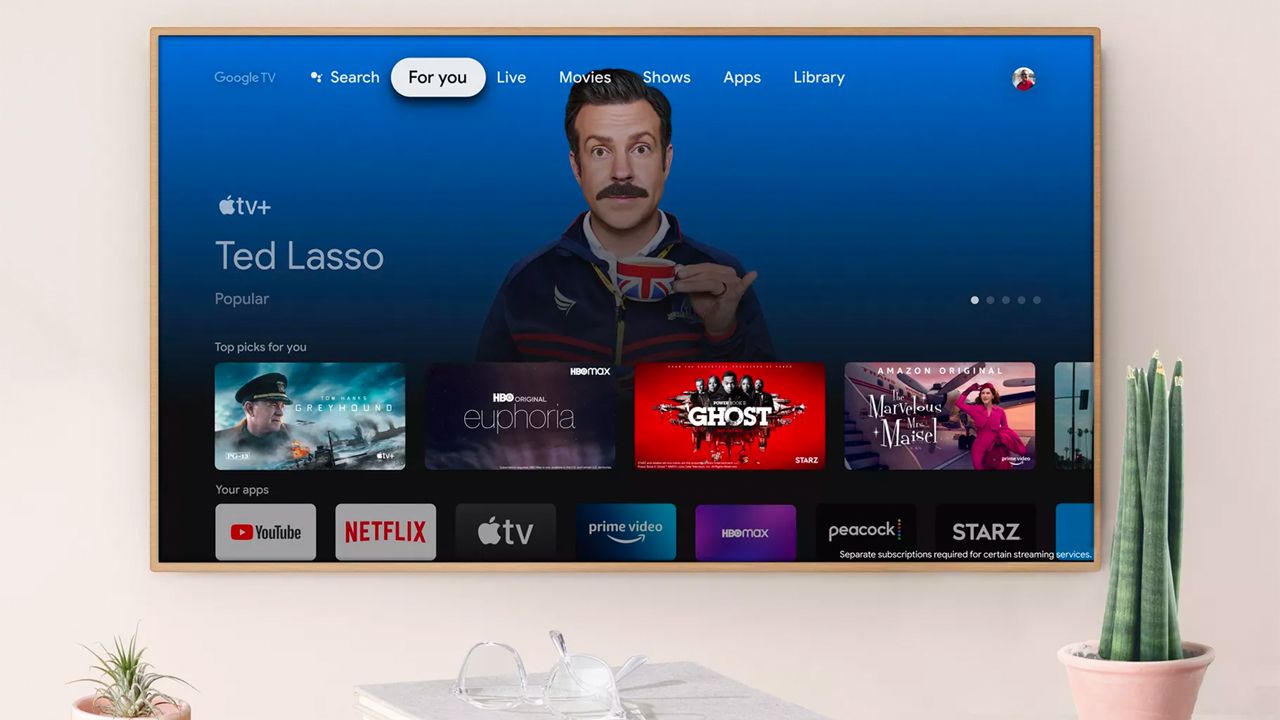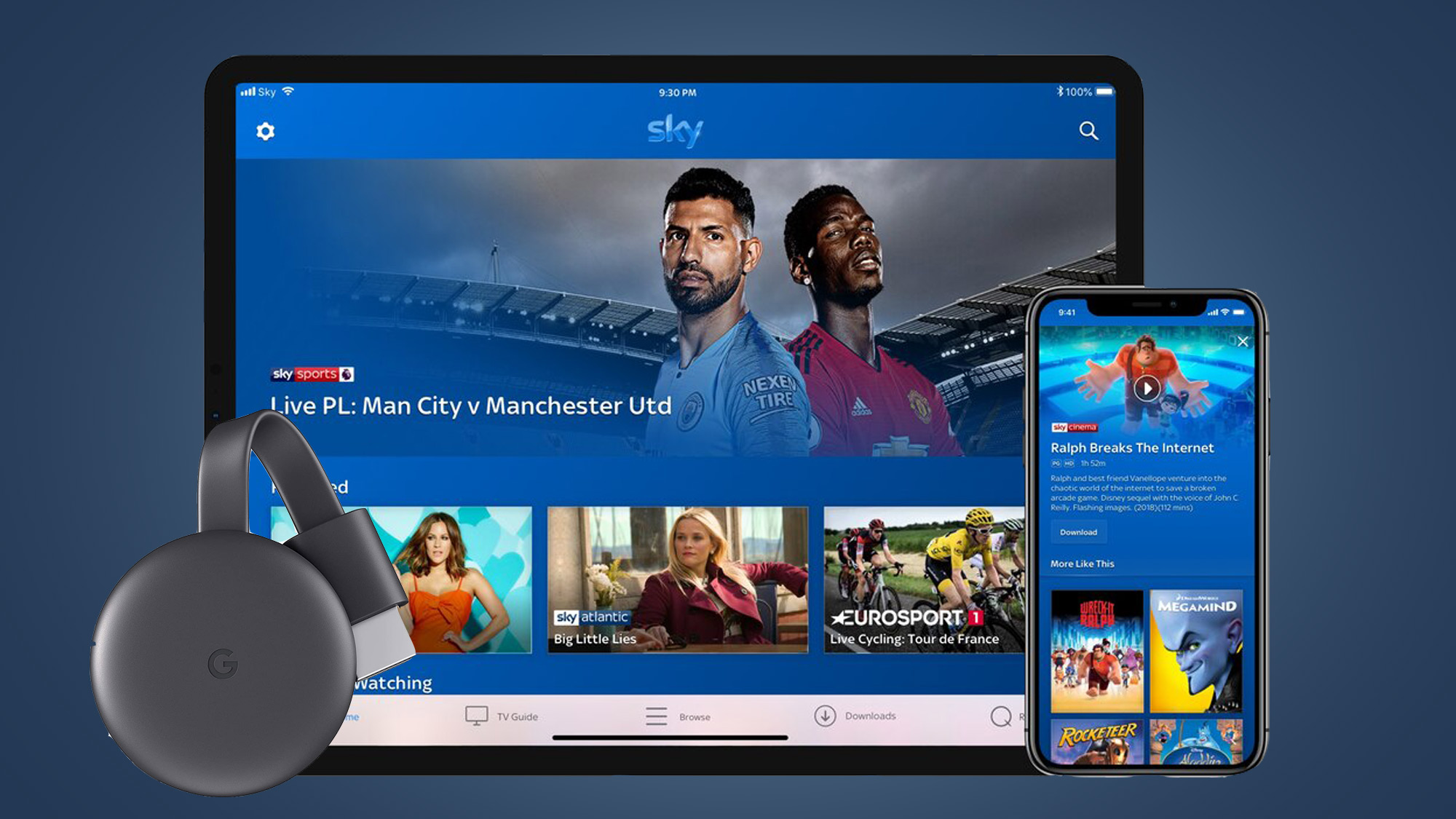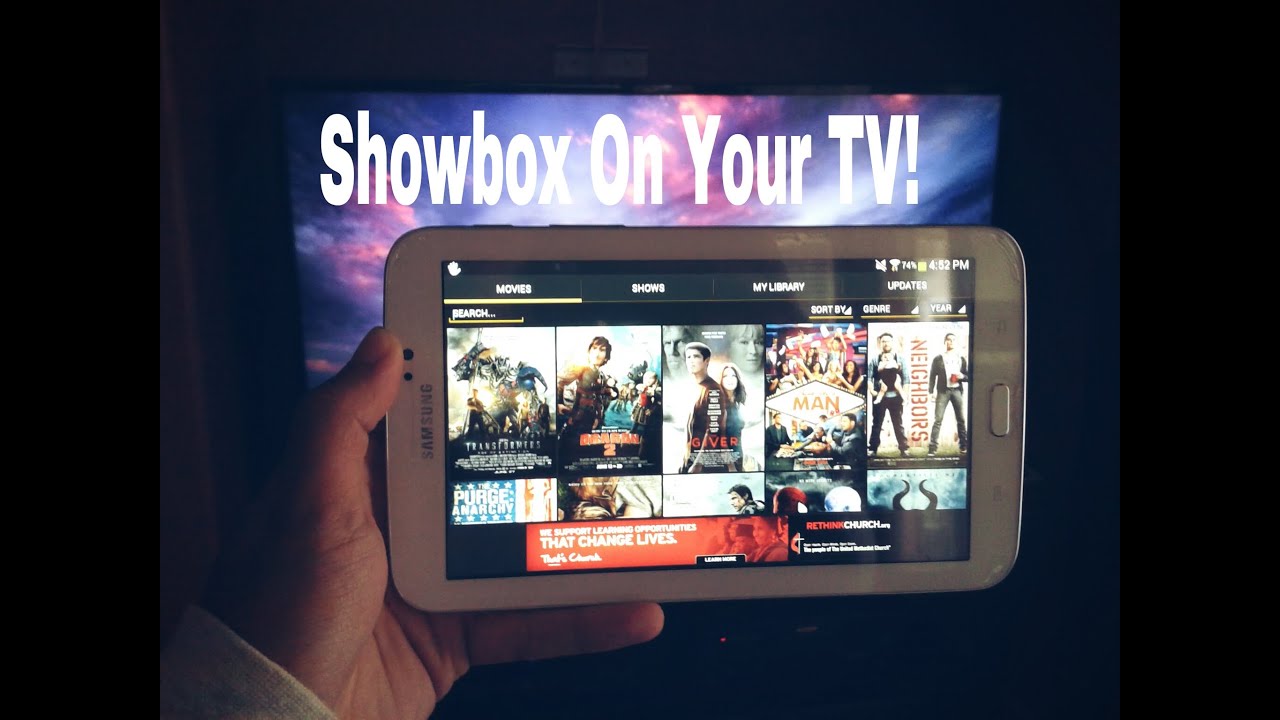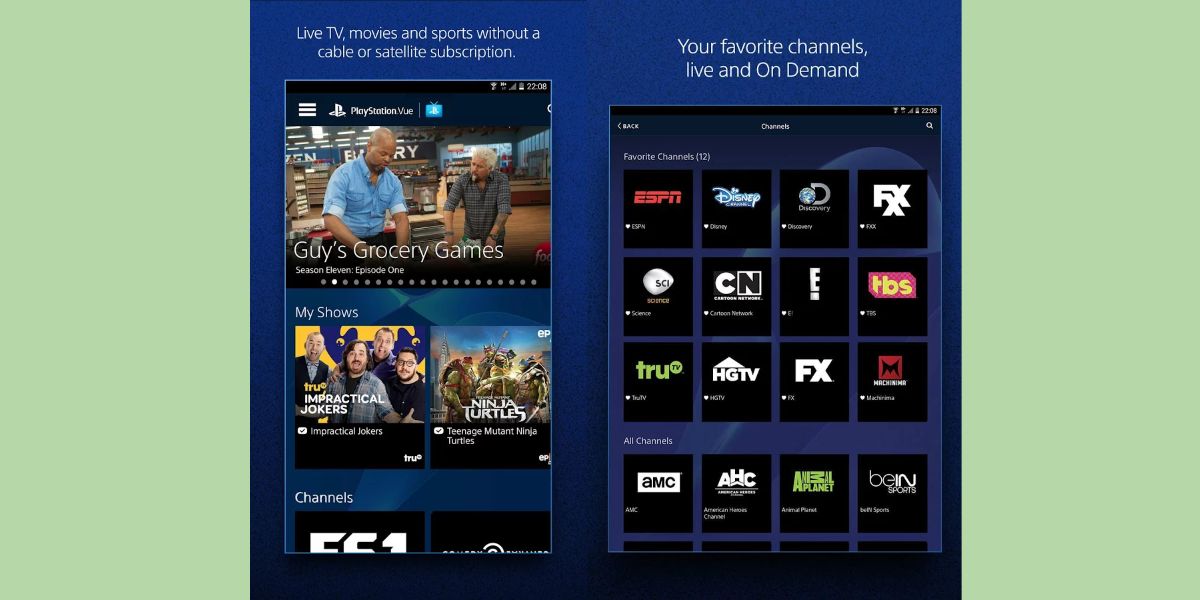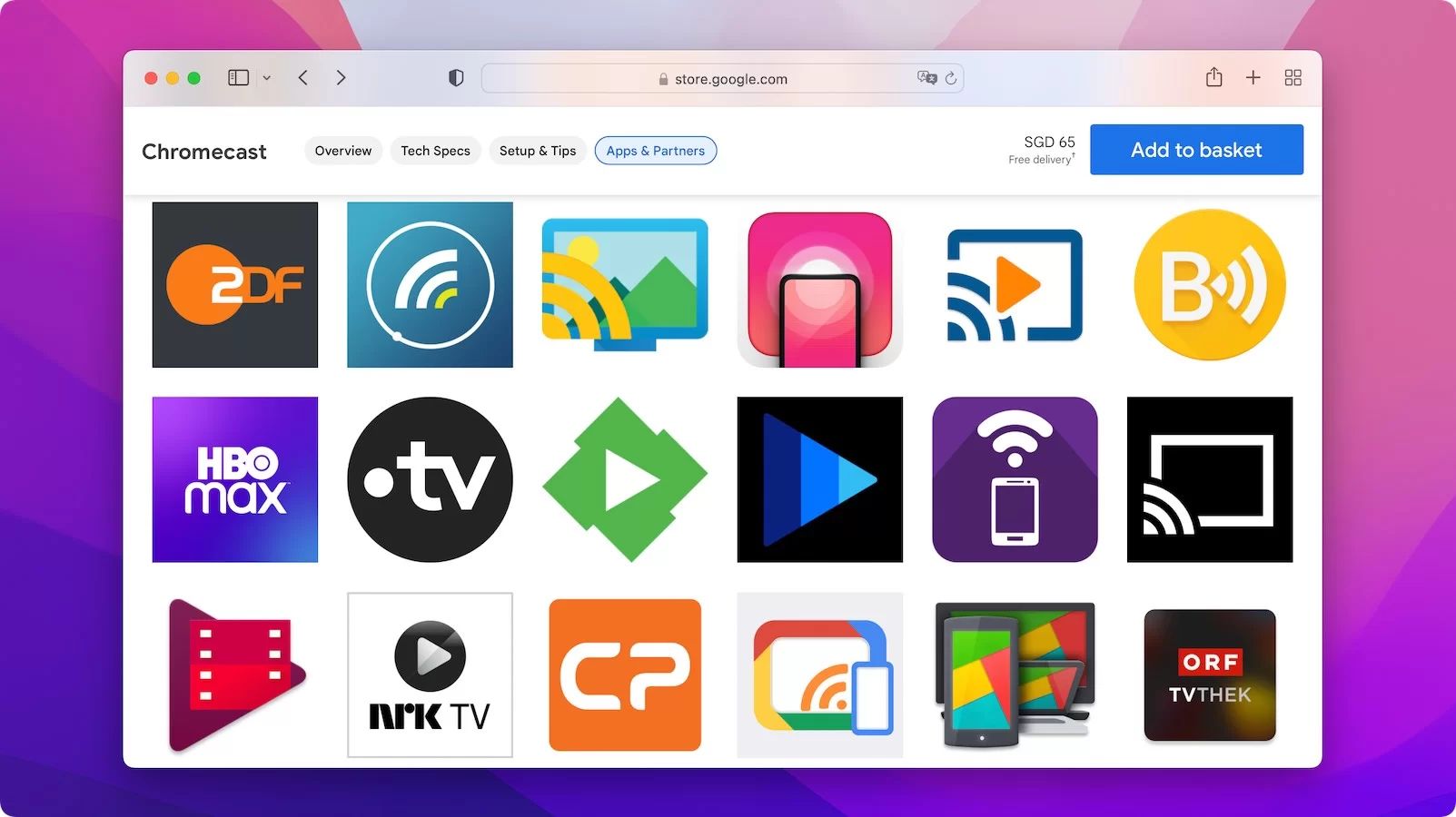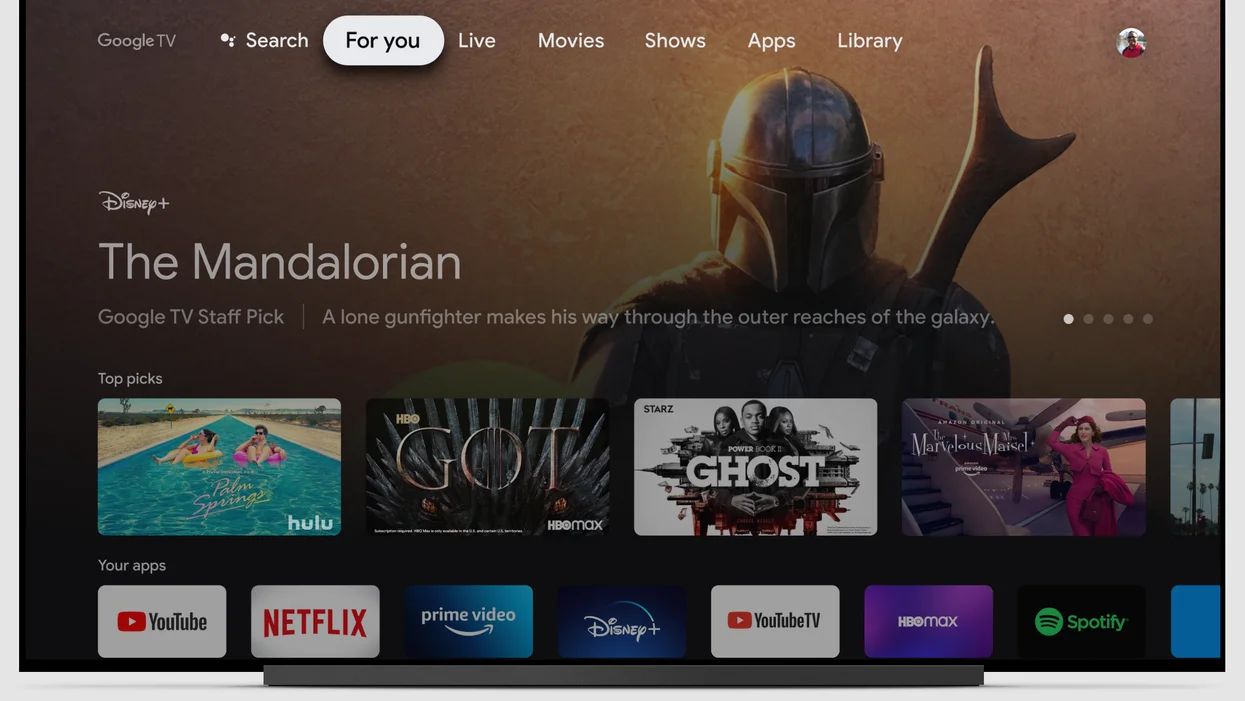Introduction
Streaming devices have revolutionized the way we consume media, allowing us to enjoy our favorite TV shows, movies, and videos on-demand. One such popular streaming device is Chromecast. Developed by Google, Chromecast offers a simple and affordable solution to turn your regular TV into a smart TV, capable of streaming content from various sources.
With Chromecast, you can stream videos, music, and photos from your phone, tablet, or computer directly to your TV, creating a more immersive and enjoyable viewing experience. Whether you want to catch up on the latest Netflix series, watch YouTube videos on the big screen, or listen to your favorite Spotify playlists, Chromecast provides a seamless way to do it all.
So, how does Chromecast work? Essentially, it acts as a bridge between your TV and your mobile device or computer, allowing you to “cast” or stream content from your device to your TV screen. Unlike other streaming devices that rely on a standalone interface, Chromecast simply mirrors what’s on your device and plays it on the TV.
Setting up Chromecast is a breeze. All you need is a compatible TV with an HDMI port and a stable Wi-Fi connection. Once connected, you can control your Chromecast using your phone, tablet, or computer, giving you the freedom to browse and select what you want to watch without interrupting the content on your TV screen.
In this article, we will guide you through the process of setting up and using Chromecast, as well as provide helpful tips and troubleshooting advice. Whether you’re a tech enthusiast looking to expand your streaming capabilities or a casual viewer hoping to simplify your entertainment setup, this guide will help you make the most out of your Chromecast device.
What is Chromecast?
Chromecast is a streaming device developed by Google that allows you to stream content from your phone, tablet, or computer directly to your TV. It is a small dongle that plugs into the HDMI port of your TV, turning it into a smart TV capable of accessing various streaming services and apps.
Unlike other streaming devices, Chromecast does not have a built-in interface or remote control. Instead, it relies on the casting feature, which allows you to cast or mirror content from your mobile device or computer onto the TV screen. Essentially, it acts as a wireless bridge between your devices, enabling you to control what appears on the TV via your phone, tablet, or computer.
Chromecast supports a wide range of streaming apps and services, including popular services like Netflix, YouTube, Hulu, Spotify, and more. You can access these services by simply selecting the desired content on your phone, tablet, or computer and casting it to your TV through the Chromecast device. This makes it easy to enjoy your favorite shows, movies, and music on the big screen.
One of the key advantages of Chromecast is its versatility. It is compatible with both Android and iOS devices, allowing users with different operating systems to harness its streaming capabilities. Additionally, Chromecast works with any TV with an HDMI port, regardless of the brand or model, making it accessible to a wide range of users.
Chromecast also supports multi-room audio, which means you can connect multiple Chromecast devices to different speakers or TVs throughout your home and synchronize them to play the same audio. This creates a cohesive audio experience, perfect for parties or simply filling your entire house with music.
Overall, Chromecast offers a convenient and affordable way to transform your regular TV into a smart TV, giving you access to a world of streaming content. Whether you want to enjoy your favorite shows, movies, music, or even play mobile games on the big screen, Chromecast gives you the flexibility to do it all.
How does Chromecast work?
Chromecast is designed to be a simple and user-friendly streaming device that seamlessly connects your mobile devices or computer to your TV. It works by using your phone, tablet, or computer as a remote control, allowing you to cast or mirror content from these devices to your TV screen.
When you want to stream something, whether it’s a video, music, or photo, you simply open a compatible app on your mobile device or computer. Within the app, you’ll find a “cast” button that allows you to select the Chromecast device you want to stream to. Once you select the device, the content will begin playing on your TV screen.
But how does Chromecast actually transmit the content from your device to the TV? When you cast something, your mobile device or computer sends a signal to your Chromecast device, instructing it to retrieve the content you want to stream. The Chromecast device then connects to the internet independently of your device and starts streaming the content directly from the source.
One of the key advantages of Chromecast is that it doesn’t rely on your mobile device or computer to continue streaming the content. This means you can use your device for other tasks or even turn it off entirely, and the content will continue playing on your TV. The Chromecast device fetches the content over Wi-Fi and directly delivers it to your TV, allowing for a smooth and uninterrupted streaming experience.
In addition to streaming media content, Chromecast also allows you to cast webpages from the Chrome browser on your computer. This can be useful for displaying presentations, photos, or any other content you can access through your browser.
Chromecast supports various audio and video formats, allowing you to stream content in high definition. It also supports 4K streaming for compatible TVs, ensuring you can enjoy an immersive viewing experience with stunning visual quality.
Overall, Chromecast works by leveraging your mobile device or computer as a control center, instructing the Chromecast device to fetch and stream content from the internet directly to your TV. Its simplicity and versatility make it a popular choice for those looking to enhance their entertainment setup and enjoy a wide range of streaming content on their TV screens.
Setting up Chromecast
Setting up Chromecast is a straightforward process that can be completed in just a few simple steps. Before you begin, ensure that you have a compatible TV with an available HDMI port and a stable Wi-Fi network.
The first step is to plug the Chromecast device into your TV’s HDMI port. Connect the other end of the Chromecast to a power source using the provided USB cable. You can use the USB port on your TV if it has one, or plug it into a wall outlet using a USB power adapter.
Once the Chromecast is connected, turn on your TV and switch to the corresponding HDMI input. You should see the Chromecast setup screen displayed on your TV. If you don’t, use your TV’s remote control to navigate to the correct HDMI input.
To control the setup process, you will need to download and install the Google Home app on your mobile device or tablet. Ensure your device is connected to the same Wi-Fi network that you want your Chromecast device to be connected to.
Open the Google Home app and follow the on-screen instructions to set up your Chromecast. This includes allowing the app to access your device’s location, connecting to your Wi-Fi network, and signing in to your Google account.
During the setup process, the app will search for available Chromecast devices. Once your device is detected, it may prompt you to enter the pairing code that appears on your TV screen. Confirm the code in the app to establish a connection.
After successfully pairing your device, you can give your Chromecast a name to easily identify it in the future. You can also choose to enable guest mode, which allows others to cast to your Chromecast without being on your Wi-Fi network.
Once the setup is complete, you can start casting content from your mobile device or computer to your TV. Simply open a compatible app, look for the cast button, and select your Chromecast device. The content will then begin streaming on your TV screen.
It’s worth noting that if you have multiple Chromecast devices in your home, you can repeat the setup process for each device to connect them to your Wi-Fi network. This way, you can cast different content to different devices or synchronize them to play the same content throughout your home.
With the initial setup complete, you are now ready to explore the world of streaming on your TV using Chromecast. In the following sections, we will delve deeper into casting from different devices, exploring compatible apps and troubleshooting common issues.
Connecting your TV to Chromecast
Connecting your TV to Chromecast is a simple and straightforward process. Here are the steps to do it:
- Make sure your TV is turned off and that you have the Chromecast device and its power supply handy.
- Locate an available HDMI port on your TV. Chromecast requires an HDMI port to connect.
- Take the Chromecast device and insert it into the HDMI port of your TV. Ensure it fits securely.
- Connect the power supply to the Chromecast device using the provided USB cable.
- Plug the other end of the USB cable into a power outlet or a USB port on your TV, depending on your preference.
- Turn your TV on and switch to the corresponding HDMI input. Most modern TVs have an HDMI input button on their remote control.
- If everything is set up correctly, you should see the Chromecast setup screen displayed on your TV.
Now that your Chromecast is physically connected to your TV, you are ready to proceed with the setup process.
Please refer to the previous section on “Setting up Chromecast” to complete the initial setup using the Google Home app. This step involves connecting your Chromecast to your Wi-Fi network and signing in to your Google account.
It’s worth noting that some newer TVs may offer a built-in Chromecast feature, eliminating the need for a separate Chromecast device. These TVs usually have the “Chromecast built-in” logo on the box or in the specifications. In such cases, you can directly set up and control the Chromecast feature from the TV’s interface without the need for an external device.
However, for most TVs, you will need to use an external Chromecast device for streaming capabilities. The setup process remains the same, regardless of whether you have a standalone Chromecast device or a TV with Chromecast built-in.
By connecting your TV to Chromecast, you unlock a world of streaming possibilities, allowing you to enjoy your favorite content from various apps and services on the big screen. With the physical connection established and the setup process complete, you can start casting content from your mobile devices or computer to your TV with a simple tap or click.
Configuring Chromecast
Once you have physically connected your Chromecast to your TV and completed the initial setup, there are a few additional configuration options and settings you can explore to enhance your streaming experience. Here are some key configuration steps to consider:
1. Adjusting Display Settings: You can customize the display settings of your Chromecast through the Google Home app. Access the app, select your Chromecast device, and navigate to “Device settings.” From there, you can adjust settings such as screen resolution, screen position, and overscan to optimize the display on your TV.
2. Enabling Guest Mode: By enabling the Guest Mode feature, your Chromecast can be accessed by other users without them needing to be connected to your Wi-Fi network. This can be convenient when you have guests who want to cast content to your TV. To enable Guest Mode, go to the Google Home app, select your Chromecast device, and navigate to “Device settings.” From there, you can toggle on the Guest Mode option.
3. Customizing Backdrop: Chromecast offers a feature called Backdrop, which allows you to personalize the screensaver that appears when your Chromecast is idle. You can choose to display curated artwork, photos from your Google Photos library, news headlines, and more. To customize the Backdrop, open the Google Home app, select your Chromecast device, and navigate to “Backdrop settings.”
4. Managing Linked Accounts: You can link your Chromecast to multiple Google accounts, giving each member of your household their own personalized streaming experience. To manage linked accounts, go to the Google Home app, select your Chromecast device, and navigate to “Device settings.” From there, you can add or remove linked accounts.
5. Updating Chromecast Firmware: Google periodically releases firmware updates for Chromecast to improve performance and add new features. It’s important to keep your Chromecast updated to ensure the best streaming experience. The firmware updates are automatically downloaded and installed in the background when your Chromecast is connected to the internet.
6. Resetting Chromecast: If you encounter any issues or want to start fresh with your Chromecast, you can perform a factory reset. To do this, locate the physical reset button on the Chromecast device, usually located on the side or back. Press and hold the reset button for about 25 seconds until the LED light on the Chromecast starts flashing. After the reset, you can set up your Chromecast again following the initial setup steps.
By exploring and configuring these settings, you can tailor your Chromecast experience to your preferences and make the most out of its features. Keep in mind that the available settings may vary slightly depending on the device and the version of the Google Home app you are using.
Downloading and installing the Chromecast app
To fully utilize the features and capabilities of your Chromecast device, you will need to download and install the Chromecast app on your mobile device or tablet. This app, called Google Home, is available for both Android and iOS devices and acts as a control center for your Chromecast.
Here’s how you can download and install the Chromecast app:
- Open the app store on your mobile device or tablet. For Android devices, this is the Google Play Store, and for iOS devices, it is the App Store.
- Search for “Google Home” in the app store search bar.
- Locate the official Google Home app from Google LLC and tap on it.
- Tap on the “Install” or “Get” button to start the download and installation process.
- Once the app is downloaded and installed, you can open it from your device’s home screen.
Alternatively, you can also use the following direct links to the Google Home app:
After opening the Google Home app, make sure your mobile device or tablet is connected to the same Wi-Fi network that you want your Chromecast device to connect to. The app will guide you through the setup process, including connecting your Chromecast to your Wi-Fi network and signing in to your Google account.
Once your Chromecast and the Google Home app are successfully connected, you can use the app to control your Chromecast device, cast content from various apps and services to your TV, and configure additional settings such as display preferences, enabling guest mode, and customizing the Backdrop.
Keep in mind that the Google Home app is regularly updated by Google to introduce new features and improvements. Make sure to keep the app up to date by regularly checking for updates in the app store.
Downloading and installing the Chromecast app is an essential step towards unlocking the full potential of your Chromecast device. It serves as the central hub for controlling and managing your streaming experience, making it easier to cast content from your mobile devices or tablet to your TV with just a few taps.
Setting up and connecting to your home Wi-Fi network
One of the crucial steps in setting up your Chromecast device is connecting it to your home Wi-Fi network. Here is a step-by-step guide:
- Ensure that your Chromecast device is correctly connected to your TV and turned on.
- Open the Google Home app on your mobile device or tablet. Make sure that your device is connected to the same Wi-Fi network that you want your Chromecast device to connect to.
- In the app, you should see a list of available devices. Select your Chromecast or Chromecast Ultra from the list.
- Next, the app will guide you through the setup process. Tap on “Set up” or “Add” to begin.
- Follow the on-screen instructions to connect your Chromecast to your Wi-Fi network. The app will ask you to confirm your Wi-Fi settings and enter your Wi-Fi network credentials (network name and password).
- Once you have entered the correct network information, the Chromecast device will attempt to connect to your Wi-Fi network.
- If the connection is successful, you will see a confirmation message on the app. Your Chromecast device is now connected to your home Wi-Fi network.
It’s important to ensure that you have a stable and reliable Wi-Fi connection during the setup process to avoid any connectivity issues. If you experience difficulty connecting your Chromecast to your Wi-Fi network, double-check your network credentials and try moving the Chromecast device closer to your Wi-Fi router.
After successfully connecting your Chromecast to your Wi-Fi network, you can begin casting content from your mobile device or tablet to your TV. Simply open a compatible app, look for the cast button, and select your Chromecast device. The content will then start streaming on your TV screen.
Remember, your Chromecast and the device you are casting from must be connected to the same Wi-Fi network for casting to work. If you have multiple Wi-Fi networks in your home, ensure that both devices are connected to the same network.
If you change your Wi-Fi network or move your Chromecast to a different location, you will need to go through the setup process again to connect it to the new network.
By successfully setting up and connecting your Chromecast to your home Wi-Fi network, you can enjoy seamless streaming and casting of your favorite content from your mobile device or tablet to your TV screen.
Linking your Chromecast device to your Google account
Linking your Chromecast device to your Google account is an essential step that allows you to access personalized features and settings. By signing in with your Google account, you can enjoy a seamless and personalized streaming experience across multiple devices. Here’s how you can link your Chromecast device to your Google account:
- Ensure that your Chromecast device is connected to your TV and turned on.
- Open the Google Home app on your mobile device or tablet.
- In the app, you should see a list of available devices. Select your Chromecast or Chromecast Ultra from the list.
- A screen will appear with an option to sign in to your Google account. Tap on “Sign in” or “Link with Google Account.”
- Enter your Google account credentials, including your email address and password.
- Once you have successfully signed in, your Chromecast device will be linked to your Google account.
- Linking your Chromecast to your Google account enables personalized features such as accessing your purchased or rented movies, syncing preferences across multiple devices, and using voice commands with devices like Google Home or Google Assistant-enabled devices.
By linking your Chromecast device to your Google account, you will be able to enjoy a seamless and personalized streaming experience. For example, if you start watching a movie on one device, you can easily continue watching it from where you left off on another device.
Keep in mind that you can link multiple Chromecast devices to a single Google account, which is convenient if you have multiple TVs in your home. Each device will be linked individually, allowing you to control and manage them separately.
If you ever need to change your Google account linked to your Chromecast device, you can do so by performing a factory reset on the device and going through the setup process again, signing in with your desired Google account.
By linking your Chromecast device to your Google account, you unlock a range of personalized features and settings that enhance your streaming experience. Whether it’s accessing your favorite content, syncing preferences, or utilizing voice commands, linking your Chromecast to your Google account provides a seamless and tailored entertainment experience.
Casting from your phone or tablet
One of the key features of Chromecast is its ability to cast or stream content from your phone or tablet to your TV. Whether you want to watch a movie, view photos, or listen to music, casting from your mobile device is a simple and convenient way to enjoy your favorite content on the big screen. Here’s how you can cast content from your phone or tablet to your TV:
- Make sure that your Chromecast device and your mobile device or tablet are connected to the same Wi-Fi network.
- Open a compatible app on your mobile device or tablet that supports casting. Some popular apps include Netflix, YouTube, Spotify, Hulu, and Google Play Movies & TV.
- Look for the cast button within the app. It is usually represented by a square with a Wi-Fi-like symbol in the corner.
- Tap on the cast button, and a list of available devices will appear. Select your Chromecast device from the list.
- The content will start streaming on your TV screen, and you can control playback using your mobile device or tablet as a remote control. You can pause, play, adjust the volume, and browse for more content.
- Some apps also offer additional casting features, such as queueing up multiple videos or creating playlists.
- When you’re finished, simply stop casting from the app or disconnect by tapping on the cast button and selecting the option to stop casting.
It’s important to note that not all apps support casting, so make sure to look for the cast button within the app to determine if casting is available.
In addition to casting content from individual apps, you can also mirror the entire screen of your mobile device or tablet on your TV using the casting feature. This allows you to display anything that’s on your device’s screen, including photos, presentations, or web browsing.
Keep in mind that during casting, your mobile device or tablet acts as the control center, and you can continue using it for other tasks while the content is streaming on your TV. You can answer calls, reply to messages, or even lock your device without interrupting the streaming.
Casting from your phone or tablet to your TV with Chromecast provides a convenient way to enjoy a wide range of content on a larger screen. Whether you want to binge-watch your favorite TV shows, listen to music with friends, or share photos with family, casting puts you in control of your entertainment experience.
Casting from a computer
Aside from casting content from your phone or tablet, Chromecast also allows you to cast from a computer, providing you with more flexibility and options for enjoying your favorite content on the big screen. Here’s how you can cast from your computer to your TV using Chromecast:
- Ensure that your computer and Chromecast device are connected to the same Wi-Fi network.
- Open the Chrome browser on your computer. If you don’t have it, you can download it from the official Chrome website.
- Click on the three-dot menu icon in the top-right corner of the browser window, then select “Cast…” from the drop-down menu.
- A small Cast popup window will appear, showing the available Chromecast devices on your network. Select your desired Chromecast device from the list.
- The contents of your Chrome browser tab or the entire desktop will begin streaming on your TV screen.
- You can then navigate to the website or web content you want to cast, and it will be displayed on your TV.
- While casting, you can control playback using your computer as a remote control. You can pause, play, adjust the volume, and even open new tabs without interrupting the cast.
- When you’re finished casting, click on the Cast icon in the Chrome toolbar again, then select “Stop casting” from the drop-down menu.
It’s important to note that casting from a computer may have some limitations depending on the content and website you are viewing. Not all web content supports casting, and some websites may have specific casting restrictions.
In addition to casting individual tabs, you can also cast your entire desktop. This allows you to display anything that’s on your computer’s screen, including presentations, documents, or even video games. To cast your entire desktop, follow the same steps above but select the option to cast the entire screen instead of a specific tab.
While casting from a computer, you can continue using your computer for other tasks or browsing different websites, and the cast will continue uninterrupted on your TV.
Casting from a computer with Chromecast expands your options for enjoying online content on a larger screen. Whether you want to browse the internet, present slideshows, or stream movies and music from your computer, casting provides a convenient and versatile solution for sharing and enjoying content with friends, family, or colleagues on your TV.
Streaming apps and services compatible with Chromecast
Chromecast is compatible with a wide range of streaming apps and services, offering you endless choices for accessing and enjoying your favorite content on your TV. Whether you’re in the mood for movies, TV shows, music, sports, or news, Chromecast has you covered. Here are some popular streaming apps and services that are compatible with Chromecast:
- Netflix: One of the leading streaming platforms, Netflix offers a vast library of movies, TV shows, documentaries, and original content. Cast your favorite Netflix shows and movies directly to your TV using Chromecast.
- YouTube: The world’s largest video-sharing platform, YouTube, is fully compatible with Chromecast. Explore a vast array of video content from creators worldwide and cast them to your TV for an immersive viewing experience.
- Hulu: Enjoy a diverse selection of TV shows, movies, and original content on Hulu. Access popular dramas, comedies, reality shows, and more. With Chromecast, you can cast your desired content to your TV with ease.
- Spotify: Listen to your favorite songs, albums, and playlists with Spotify. With Chromecast, you can easily stream your favorite music tracks to your TV and enjoy a visual component alongside the audio.
- Disney+: Stream your favorite Disney, Marvel, Star Wars, Pixar, and National Geographic content on Disney+. From classic animations to new releases, experience the magic of Disney on your TV with Chromecast compatibility.
- Amazon Prime Video: Access an extensive collection of movies, TV shows, and original content with Amazon Prime Video. Bring the cinematic experience home by casting your desired shows and movies to your TV using Chromecast.
- Google Play Movies & TV: Rent or purchase movies and TV shows from Google Play Movies & TV, and cast them to your TV with Chromecast. Enjoy a vast selection of blockbuster movies, independent films, and popular TV series.
- ESPN: Sports enthusiasts can stream live sporting events, news, highlights, and analysis from ESPN. With Chromecast, you can catch up on your favorite games and cheer for your team on the big screen.
These are just a few examples of the wide range of streaming apps and services that are compatible with Chromecast. Many more apps and services, including HBO Max, Plex, Twitch, CBS All Access, and many others, support Chromecast and offer a variety of content for you to enjoy.
When using compatible apps, you will usually find a cast button within the app’s interface, allowing you to directly stream the content to your TV. Simply tap the cast button, select your Chromecast device, and the content will begin playing on your TV screen.
With Chromecast, you have the freedom to choose from a diverse array of streaming platforms, ensuring that you can access and enjoy your preferred content on the big screen. Explore different apps and services, discover new shows and movies, and make the most out of your Chromecast streaming experience.
Troubleshooting common issues
While Chromecast is designed to provide a seamless streaming experience, you may occasionally encounter some issues. Here are some common problems you might face and the steps to troubleshoot them:
No device found: If the Google Home app cannot find your Chromecast device, ensure that your mobile device or computer is connected to the same Wi-Fi network. Also, check that your Chromecast device is connected and powered on. Restarting your router or Chromecast device may help resolve connectivity issues.
Poor video quality or buffering: If you experience low-quality video or frequent buffering, check the following: ensure that your Wi-Fi signal is strong and that there are no physical obstructions between your Chromecast and the router. Closing unnecessary apps running in the background of your casting device may also help improve performance. Additionally, consider using a wired Ethernet connection with the Chromecast Ultra for enhanced stability.
No sound or audio sync issues: If you are having audio issues, ensure that the volume on both your casting device and TV is turned up. Verify that your TV audio settings are correctly configured for the HDMI input connected to Chromecast. Some audio sync issues can be resolved by restarting your casting device or router.
Device unresponsive or frozen: If your Chromecast device becomes unresponsive, try unplugging the power source for a few seconds and then plugging it back in. If the issue persists, perform a factory reset by holding down the reset button on the Chromecast device for about 25 seconds until the LED light begins flashing.
Unable to cast from specific apps: If you’re having trouble casting content from a particular app, ensure that both the app and your Chromecast are updated to their latest versions. Restarting the casting device and re-opening the app may also help resolve the issue. Additionally, check if the app you are trying to cast from is compatible with Chromecast.
Network congestion: If you are experiencing slow or inconsistent streaming, it might be due to network congestion. Consider reducing the number of devices connected to your Wi-Fi network or switching to a less crowded Wi-Fi channel. Alternatively, upgrading your internet plan and using a dual-band router can also help alleviate this issue.
If you encounter persistent issues that you cannot resolve, visiting the official Chromecast Help Center (support.google.com/chromecast) can provide further assistance. The help center offers troubleshooting guides, FAQs, and an active community forum where experienced users and Google representatives can help address your concerns.
By troubleshooting common issues, you can maximize the performance and enjoyment of your Chromecast device, ensuring a smooth streaming experience with your favorite content on your TV.
Conclusion
Chromecast is a versatile and user-friendly streaming device that brings an array of entertainment options to your TV. By simply connecting the Chromecast device to your TV and setting it up with the Google Home app, you can enjoy seamless streaming from your phone, tablet, or computer.
Throughout this guide, we have covered the essential steps to set up and configure your Chromecast, including connecting it to your home Wi-Fi network and linking it to your Google account. We have also explored the process of casting content from your mobile devices and computer to your TV, as well as discussed the wide variety of compatible streaming apps and services.
While Chromecast provides an immersive streaming experience, it’s important to troubleshoot common issues that may arise. By following the troubleshooting steps provided, you can overcome connectivity, audio, video quality, and other issues that might affect your streaming sessions.
Chromecast continues to evolve and improve with regular firmware updates and the constant development of new streaming apps and features. It offers great value, allowing you to transform your regular TV into a smart TV without the need for expensive upgrades or additional equipment.
Whether you’re a movie enthusiast, music lover, or avid sports fan, Chromecast opens up a world of streaming possibilities right at your fingertips. From enjoying your favorite shows on Netflix to sharing family photos on the big screen, Chromecast enriches your entertainment experience and brings people together.
So go ahead, set up your Chromecast, explore the vast array of compatible apps, and immerse yourself in a world of streaming content. Enjoy the convenience, simplicity, and endless entertainment options that come with owning a Chromecast device.







